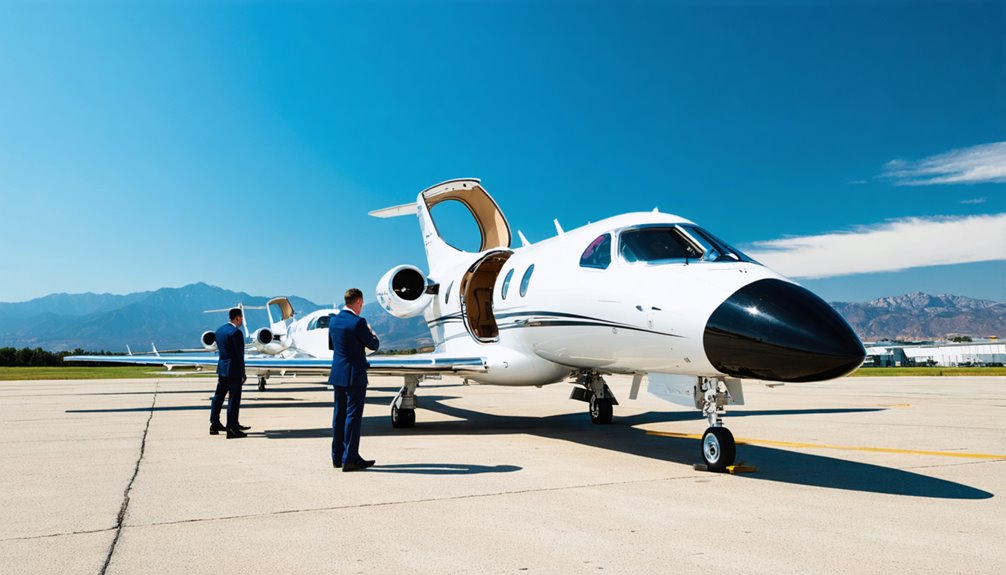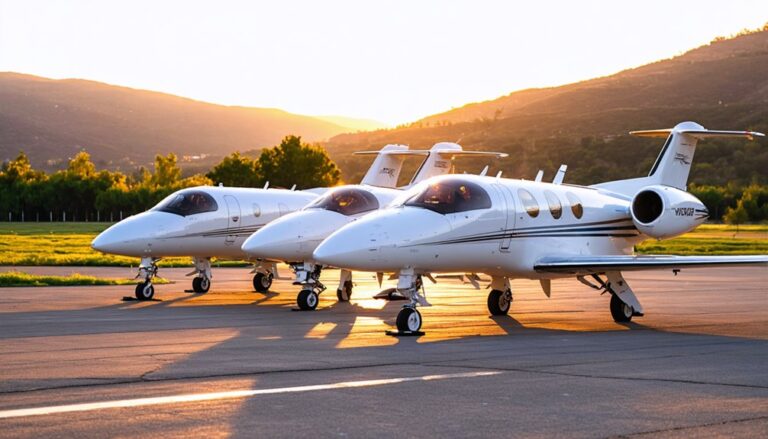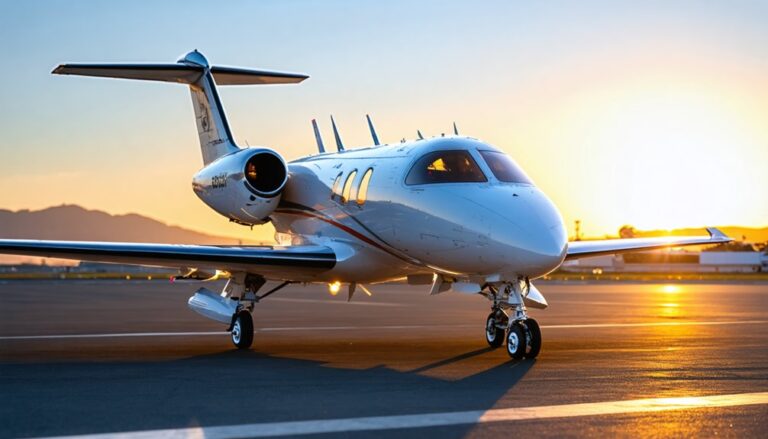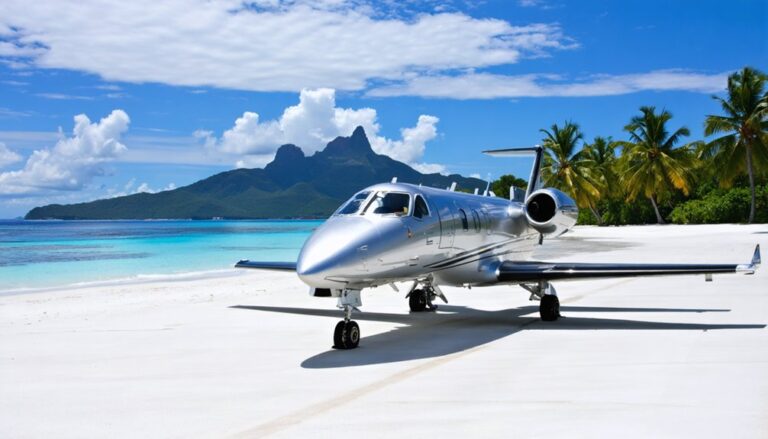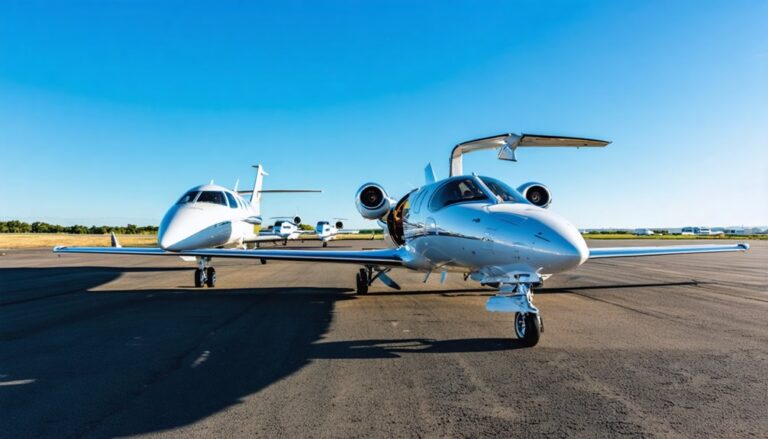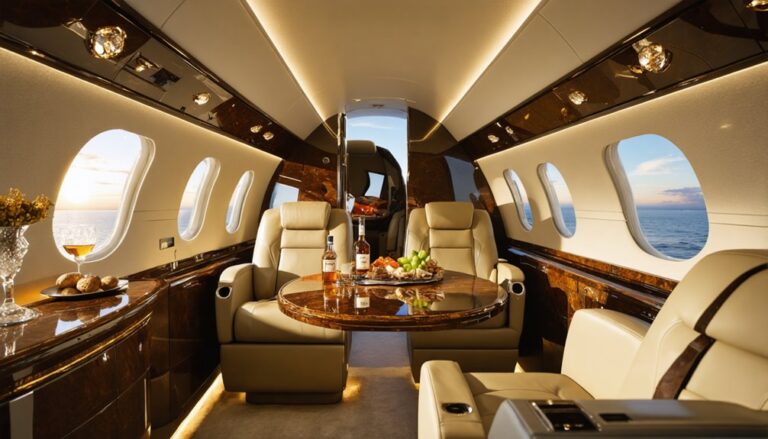How to Choose the Right Light Jet for Your Travel Needs
When selecting the right light jet for your travel needs, consider five essential factors. First, think about passenger capacity. Light jets usually fit 4 to 8 passengers, so it’s important to choose one that accommodates your group size comfortably. Next, consider range capabilities. Most light jets can fly about 1,500 miles, making them suitable for regional trips.
Another factor to assess is cabin comfort and amenities. Some light jets offer plush seating and onboard facilities that can enhance your travel experience. Operating costs are also crucial. Make sure the jet’s expenses align with your budget. Lastly, decide whether chartering or owning a jet is better for your travel habits. If you travel frequently, ownership might be more cost-effective.
Choosing a light jet requires careful thought. Each factor can significantly influence your travel experience. So, take your time to evaluate what matters most to you.
Key Takeaways
When selecting the perfect light jet for your travels, think about how many people usually travel with you. Light jets typically fit between 4 and 8 passengers. This is essential for comfort and space during your flight.
Next, check the jet’s range. You want to ensure it can reach your common destinations without needing to stop for fuel. Different light jets have varying distance capabilities, so pick one that fits your travel patterns.
Cabin comfort matters too. Look for features like headroom, seating arrangements, and amenities such as Wi-Fi. These factors contribute to a pleasant flying experience, especially on longer trips.
Operating costs are crucial to consider as well. Light jets generally cost between $1,500 and $3,000 per hour to operate. Make sure this aligns with your financial plans and how often you intend to travel.
Lastly, think about whether to charter or own a jet. Chartering rates usually range from $2,200 to $3,200 per hour. Your choice should reflect your travel frequency and overall budget.
Matching Passenger Capacity to Your Group Size
When choosing a light jet, the first thing to think about is how many people will be flying. Light jets usually have seating for 4 to 8 passengers, making them ideal for smaller groups on shorter trips.
When I look at travel needs for clients, I stress that having fewer passengers means everyone gets more room. Take the Citation Ultra, for example. It can hold up to seven passengers while still offering a comfortable and efficient flight for quick trips between cities.
It’s a good idea to look at different seating layouts before you decide. Finding the right match between your group size and the jet’s capacity can make your flying experience much better.
Having enough personal space in the air is important, which is why I focus on this balance when helping you choose the best light jet for your trip.
Evaluating Range and Performance for Your Routes
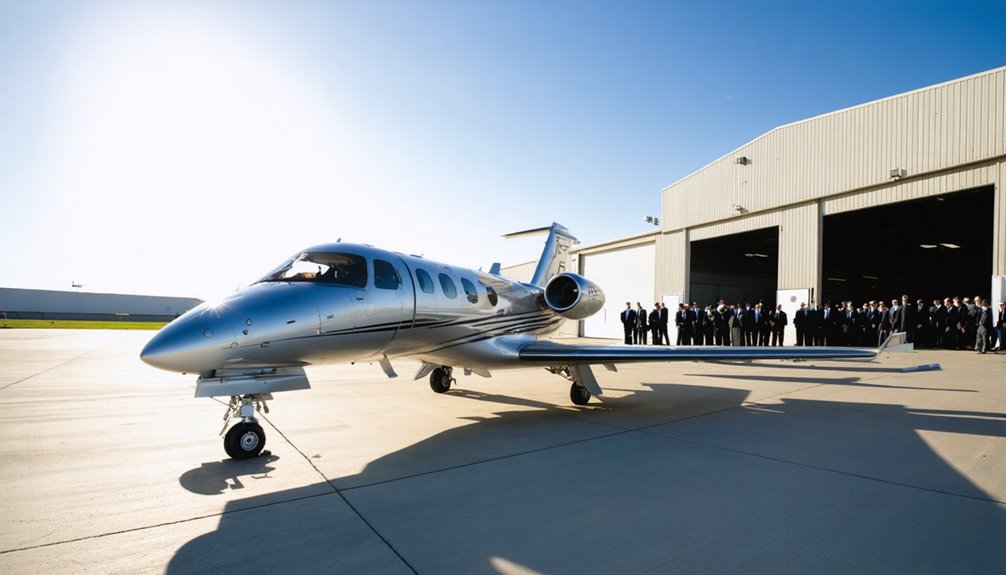
When choosing a private jet, light jets stand out for their range and performance. They allow you to fly efficiently without frequent fuel stops. Typically, light jets cover about 1,500 miles, making them ideal for regional travel. This means you can visit several cities quickly and easily.
Light jets excel in range and efficiency, offering 1,500-mile coverage that’s perfect for swift, multi-city regional trips.
If your journey is longer, consider the Cessna Citation CJ4. This model boasts a remarkable non-stop range of 2,200 miles. When assessing your travel needs, look for jets that cruise at speeds over 400 knots. These high speeds can significantly cut down travel time, especially for busy business trips.
Runway requirements are another crucial factor. Light jets need approximately 2,800 feet of runway. This smaller requirement means they can access more airports, including those that larger aircraft can’t reach.
The blend of quick climb performance and airport flexibility makes light jets an efficient and convenient choice for travelers.
Assessing Cabin Comfort and Amenities
When choosing a light jet for your travel needs, comfort is key. Light jets usually hold 4-8 passengers and have smartly designed interiors that make the most of the available space. I pay attention to more than just seats. Amenities like private lavatories and in-flight entertainment play a big role in overall comfort.
Here’s a quick look at what you can expect:
| Feature | What to Expect | Why It Matters |
|---|---|---|
| Cabin Height | 4.5-5.5 feet | Allows for some movement |
| Seating | Reclining, customizable | Lets you adjust to your liking |
| Wi-Fi Capabilities | Available in newer models | Helps you stay connected |
| Galleys | Compact but functional | Offers autonomy during flight |
| Interior Configurations | Custom layouts available | Reflects your personal style |
Most light jets have cabin heights that prevent you from standing fully upright. It’s a good idea to check out the interior in person before making a decision. This way, you can be sure it meets your comfort needs.
Understanding Operating Costs and Value
When choosing a light jet, financial aspects are crucial. Operating costs for light jets generally range from $1,500 to $3,000 per hour. These costs depend on factors like flight distance and aircraft availability.
Financial considerations are essential when selecting a light jet, with hourly operating costs typically between $1,500-$3,000.
Light jets stand out for their fuel efficiency, especially for regional travel. They’re a smart choice for business trips, helping you save money.
Your yearly budget should include maintenance, insurance, and hangar fees. These expenses can add up to hundreds of thousands of dollars.
The purchase price for a light jet usually falls between under a million to just over a million dollars. This price varies based on the aircraft’s age and condition.
Think about your travel needs. Light jets are particularly effective for short to medium-haul flights. They offer a better value compared to larger jets, which tend to consume more fuel.
Comparing Aircraft Access Options: Charter vs. Ownership
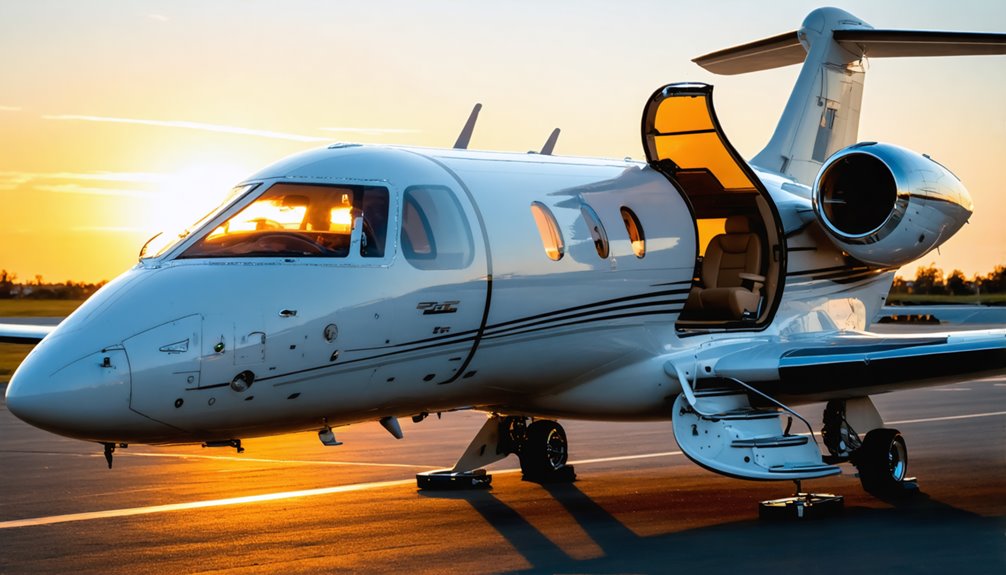
When thinking about accessing a light jet, there are two main options: chartering or owning. Each has its own unique advantages and challenges.
If you charter a jet, you avoid the hefty costs of ownership, which can include maintenance, crew salaries, and insurance. Charter services typically charge between $2,200 and $3,200 per hour. This can be a smart choice for those who fly less often.
Chartering gives you flexibility. You can choose from different aircraft types based on your needs. If you need to change your plans, it’s often easier with charter services.
On the other hand, owning a jet means you have a plane available whenever you want. You can control your schedule, but that comes with a commitment.
The costs of ownership are significant. You need a large upfront payment followed by ongoing costs that can total hundreds of thousands of dollars each year.
In contrast, when you charter, you only pay for the flights you take. This can be much more manageable for occasional travelers.
Charter services often include additional perks. You can enjoy in-flight catering and other concierge services that may not be part of a standard ownership package unless you arrange them yourself.
Ultimately, your choice will depend on how often you fly. If you’re a frequent traveler, owning a jet might be worth the extra responsibilities and costs. If you fly less often, chartering may be the better option for you.
Frequently Asked Questions
What Is the Best Selling Very Light Jet?
The Cirrus Vision Jet stands out as a top choice among very light jets. It boasts remarkable features that set it apart from its competitors. With a cozy cabin that comfortably seats five passengers, it’s designed for both comfort and convenience.
Its flying range is impressive, reaching up to 1,200 miles. This makes it suitable for various trips, whether short or medium distances. Additionally, the operating costs are reasonable, making it a practical option for many owners.
How Much Money Should You Have Before Buying a Private Jet?
Before you decide to buy a private jet, it’s wise to have ample funds. Aim for at least three times the cost of the jet itself. This amount should cover various ongoing expenses that come with owning a plane.
For light jets, which are nimble and efficient, you’ll need to consider ownership expenses. Maintenance fees can be significant. These jets require regular check-ups to ensure safety and performance. Insurance is another crucial factor. Rates can vary but generally depend on the jet’s value and your flying experience.
Operational budgets are essential too. You must account for the crew’s salaries, airport fees, and other daily costs. Fuel expenses can add up quickly, especially with the rising prices of aviation fuel.
Tax implications also play a role in your overall financial planning. Familiarize yourself with the tax breaks or liabilities associated with private jet ownership. Financing options can help ease the burden. Some buyers choose to finance part of their purchase, but understanding the terms is vital.
What Is the Most Economical Light Jet?
The Cessna Citation CJ3 stands out as a top choice for those seeking an economical light jet. With operational costs around $1,200 per hour, it offers a budget-friendly flying experience. This jet is known for its excellent fuel efficiency, allowing for longer flights without frequent refueling stops.
Traveling in the CJ3 is not just about saving money. It also provides a comfortable ride for passengers. Its cabin is designed for relaxation, making it perfect for both business trips and leisure travel.
What Is the Difference Between a Light Jet and a Super Light Jet?
Super light jets provide a more comfortable cabin experience and can fly longer distances than standard light jets. They also have similar fuel efficiency. This means you can enjoy a smooth ride without worrying too much about fuel costs.
Passenger capacity is another key difference. Super light jets typically hold more people than regular light jets, making them ideal for larger groups. Operating costs can vary as well. Super light jets might be a bit more expensive to operate, but they often offer more features.
Runway requirements also differ. Super light jets can land on shorter runways, which gives you access to more airports. This flexibility can save time and make travel easier. Overall, super light jets combine comfort, range, and efficiency in a way that appeals to many travelers.
Conclusion
Choosing the right light jet is essential for your travel needs. Think of it like finding the right fit for a tailored suit. Each jet serves different purposes. Whether you’re looking to charter or buy, consider how many passengers you’ll have, how far you need to go, the comfort features you desire, and the cost to operate the aircraft.
Passenger capacity matters. Some light jets can comfortably carry four to six passengers, while others may accommodate up to eight. The range is also important. Some jets can fly up to 2,000 nautical miles, allowing for longer trips without stops. Comfort features vary too. Look for jets with spacious cabins, comfortable seating, and amenities like Wi-Fi and entertainment systems.
Operational economics should not be overlooked. Light jets often have lower fuel consumption and maintenance costs compared to larger aircraft. Research thoroughly. Knowledge is power when making this significant decision. With careful consideration, you’ll find the perfect light jet to enhance your travel experience.
